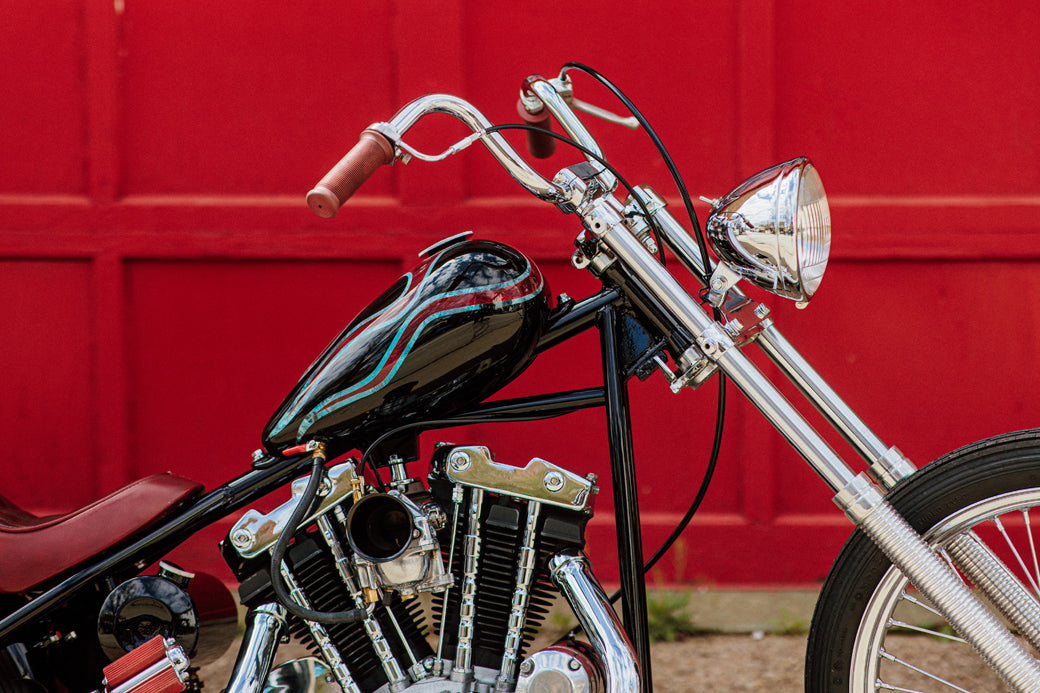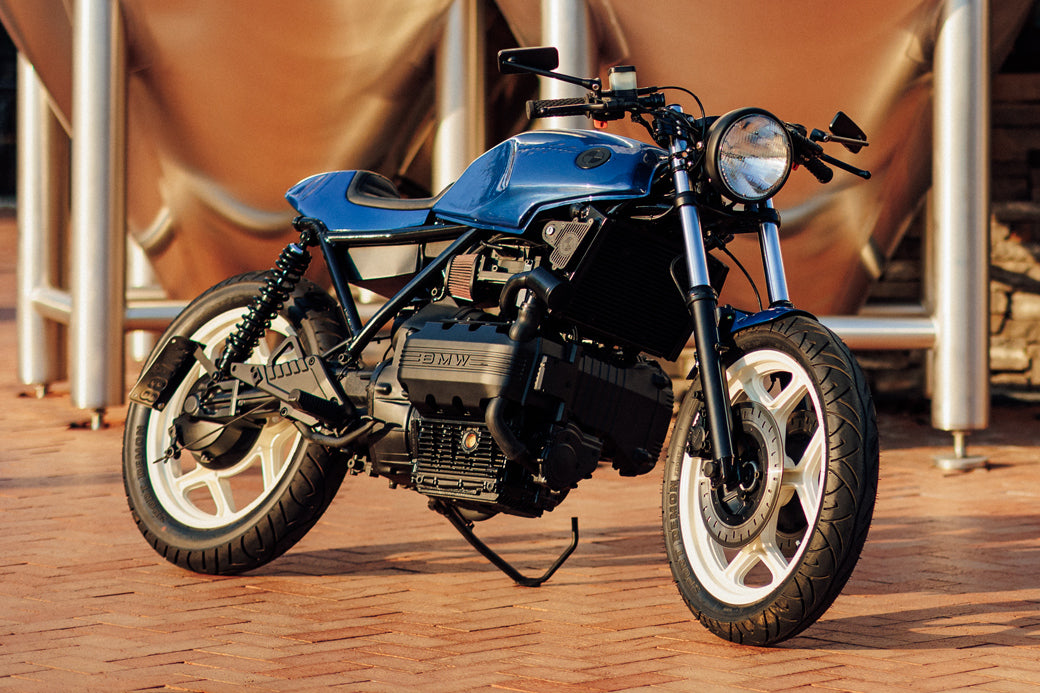
Greg Sinnamond: I found it when scouring a vintage flat tracker website. I had an idea of what I was looking for, so when this Triumph came up, I knew it was the one. The bike became available, I contacted the guy, and that’s how it all came into play. He gave me the bike’s history, and I thought it was really cool that it was built by Eddie Mulder, a factory Triumph racer from the 1960s and 70s.
It was originally a 650cc engine that was upgraded to 750cc with different heads to be competitive against the Harley XR750s in its class. The previous owner used to race it at the Walt James Dirt Track at Willow Springs. The track’s decomposed granite surface was both extremely fast and tough on paint.

GS: Quick, funny story. When I bought this land, I went in front of the local board in hopes of getting help on an issue related to the property, and there was a guy there that used to work at Homestead Mills. He saw my name and asked if my Uncle John used to work there. After I confirmed, he agreed to help me out because my uncle was the only guy working at the mill that treated him appropriately during his time as a junior. He also mentioned that my uncle used to ride a Triumph to work every single day, even in the winter.
These motorcycles were always there when I was growing up. I remember my dad and my uncles having Triumphs around more than Harleys, and I suppose I’ve always gravitated towards the look of these more. Don’t get me wrong, I really like the Harley XR750 flat trackers, but there was something about the Triumphs that really appealed to me.
GS: Almost just as important as the bike itself is the history behind it. Everything from the appearance to the way it was raced. For instance, the controls were switched from one side to the other in order to lay it over at high speeds. I like that not much was changed on the bike from those days. Even on the cars I collect, for some reason, I’m drawn to things with a history to them. In comparison to your typical restoration, I prefer that they have a story and some soul.
The fact that it came out of Eddie Mulder’s shop in Southern California was something special. I really dig the orange and grey paint, the straight headers, and the sincerity of it. Eddie truly cares about the sport of racing and took pride in his bike builds.

GS: I was given a few of the stock parts when I bought it, but this is almost exactly how it was raced. There were just a couple of small adjustments to make it street legal. A new battery, a headlight, and a push-button horn is all it took to get over the line of being able to ride it on the road legally. That was it.
GS: Sometimes with today’s bikes, it’s just too much. This is in its simplest form with a number of handmade parts and pieces that you just can’t buy.
Typically with race bikes, they’re thrashed, covered in stickers, or just put together well enough to finish the race—with very little thought put into the aesthetics. I feel this one has more class than the typical flat track racer build.
GS: Ultimately, I want to ride them. I enjoy all types of bikes, so that’s important. For instance, one of my favorite motorcycles is my everyday rider, a 2007 BMW R 1200 GS. I also have a 1972 Guzzi 850 and other vintage models with some modern technology upgrades. It’s all over the place.
In addition to the race bikes, I have some old Corvette race cars from the 1960s and 70. I’ve always been intrigued by the ones with a bit of a heartbeat. There’s a beauty to that. When you go out and take a drive in one of those cars or a ride on a bike with as much character as this Triumph, it’s more meaningful and gives you a different feel when riding. You know it’s been on the track and ridden with purpose.




















